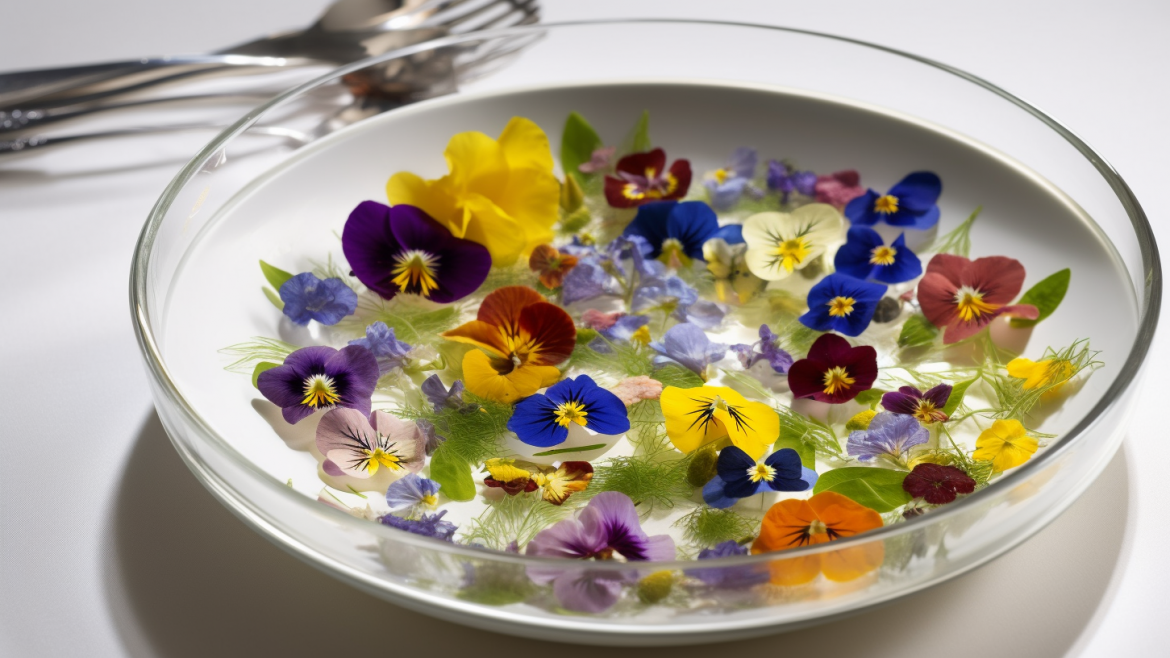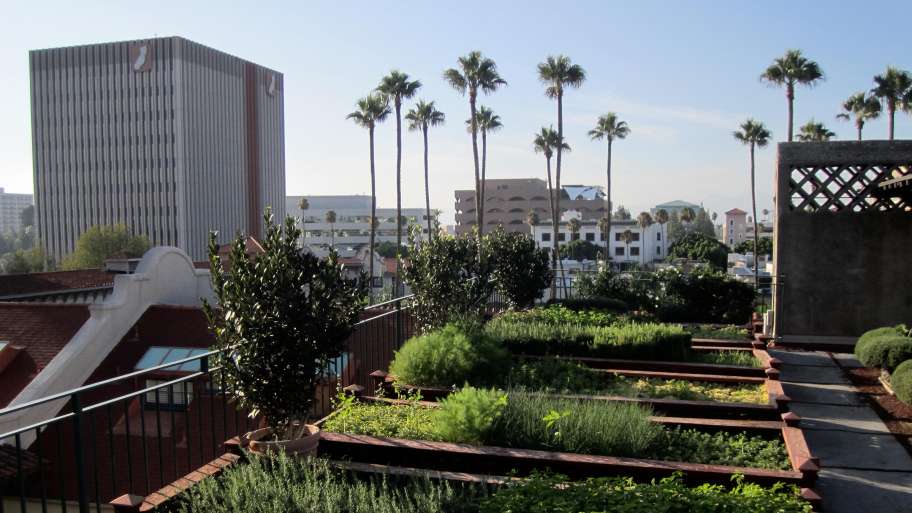Edible flowers, a feast for the eyes and the palate, are a gastronomical delight that’s enjoyed a culinary history as colorful as their vibrant petals. Their usage, spanning across cultures and centuries, has been a testament to their versatility and charm. From the ancient Romans garnishing their extravagant feasts with violets, to the Victorians decoding the language of flowers, right up to today’s innovative chefs and adventurous home cooks – the culinary world has persistently been fascinated by these blooming delicacies.
An Ode to Floral Gastronomy
This tradition of edible flowers is not just about the aesthetic appeal; it’s an exploration of flavors and textures, of subtle nuances and bold statements. Each flower, with its unique taste and fragrance, becomes a character in the story of the dish it graces. Nasturtiums add a peppery zing to salads, pansies give a sweet note to desserts, while borage blooms with its cucumber-like flavor, adorn your refreshing summer drinks. This beautiful blend of taste and visual appeal elevates the culinary experience, transforming it into a sensory delight.
But it’s not just about the taste and aesthetics. Many of these flowers come packed with health benefits. Rich in vitamins and antioxidants, they’re a delightful way to add a nutritional boost to your meals. Calendula, also known as pot marigold, is not only a vibrant addition to your dishes but is also loaded with anti-inflammatory properties. Similarly, the humble nasturtium is a powerhouse of Vitamin C.
From Garden to Gourmet
The journey of an edible flower from garden to gourmet is a tale of careful cultivation, timely harvesting, and gentle handling. For the best flavor and freshness, flowers should ideally be picked early in the morning when their water content is at its highest. Once harvested, they should be used as soon as possible, though some can be stored in the refrigerator for a few days.
The transformation these flowers undergo during cooking is magical, their delicate flavors permeating the dish, lending it an exquisite dimension. However, it’s important to remember that not all flowers are edible. Proper identification is crucial to ensure that you’re using safe and suitable blooms in your culinary creations.
Profiles of Flavor
Let’s explore some popular edible flowers that you can grow in your garden:
- Marigold: With a flavor that ranges from spicy to bitter, marigolds are a vibrant addition to salads, pasta, and rice dishes.
- Pansy: These flowers have a slightly sweet green or grassy flavor, making them a perfect garnish for desserts and cocktails.
- Chives: Chive flowers offer a delicate onion flavor, great for salads, soups, and baked potatoes.
- Nasturtium: These blossoms have a bold, peppery taste, similar to watercress. They’re perfect for adding a punch to salads and sandwiches.
The Art of Floral Pairings
Creating a symphony of flavors involves knowing how to pair your edible flowers with the right foods. Sweet flowers like pansies and violas work wonderfully with desserts or sweet cocktails, while spicy or herbaceous flowers like nasturtiums and chive blossoms are better suited to savory dishes.
Expert Insights and Experiments
Several contemporary chefs have pushed the boundaries of edible flower usage, experimenting with new dishes and combinations. Renowned chef, Darren Purchese, for instance, is known for his creative use of flowers in crafting stunning desserts.
For those of you inspired to try your hand at floral gastronomy, consider starting with something simple, like an elderflower cordial or a salad sprinkled with fresh violas.
The Art of Cooking with Edible Flowers
Cooking with edible flowers requires a careful balance between creativity and restraint. While these petals can add a dash of color and a unique flavor to your dishes, it’s important to remember that a little often goes a long way. Too many floral notes can overpower a dish, masking other flavors instead of complementing them.
When you’re just starting out, a good rule of thumb is to use edible flowers the way you would use herbs. A sprinkle of flower petals can be an appealing garnish, while whole flowers can create a stunning centerpiece for your dish.
Infusing flowers in oils, vinegar, or honey is another wonderful way to capture their essence. Lavender-infused honey, for instance, can add a lovely floral note to your teas or desserts. Similarly, chive blossom vinegar can lend a beautiful pink hue and a subtle onion flavor to your salads.
Baking with Blossoms
The world of baking offers a playground for edible flowers. From lavender cookies to hibiscus cakes, the opportunities to infuse your baked goods with floral flavors are endless.
One of the most iconic edible flower-infused baked goods is the classic Victoria sponge cake, traditionally filled with whipped cream and raspberry jam, and beautifully garnished with a crown of fresh berries and pansies.
Blooming Beverages
Edible flowers can elevate the simplest of beverages to a gourmet level. Consider, for instance, a simple lemonade. Add a handful of borage flowers, and you have a refreshing drink that’s a visual treat.
Herbal teas also greatly benefit from the addition of edible flowers. Chamomile, hibiscus, and elderflower are popular choices, each lending a unique flavor profile to the brew.
Recipe Inspiration: Floral Gastronomy
To set you off on your floral gastronomy journey, here are a few recipe inspirations:
- Calendula Risotto: Brighten up your classic risotto with a handful of calendula petals. The subtle peppery flavor complements the creamy rice beautifully.
- Rose Petal Jam: A staple in Middle Eastern cuisine, this jam is floral and fragrant. It’s perfect on toast, scones, or swirled into yogurt.
- Lavender Shortbread Cookies: These buttery cookies are infused with a hint of lavender, making them a delicate and delicious treat.
- Hibiscus Iced Tea: Refreshing and tangy, this iced tea is a summer favorite. The deep red color of the hibiscus also makes it a visual delight.
Remember, the key to cooking with edible flowers is to experiment and have fun. Let your culinary creativity bloom as you explore the myriad flavors of these botanical wonders.
Recommended Products for Your Floral Gastronomy Journey
- Cooking with Flowers: Sweet and Savory Recipes with Rose Petals, Lilacs, Lavender, and Other Edible Flowers: This cookbook by Miche Bacher should give you plenty of inspiration for your floral gastronomy journey.
- The Edible Flower Garden: A wonderful guide by Rosalind Creasy on how to grow and use edible flowers, with plenty of recipes included.
- Starwest Botanicals Organic Dried Lavender Flowers: Lavender can be used in a wide range of dishes, from sweet to savory. This organic product will help enhance your dishes with its floral aroma.
- Frontier Co-op Calendula Flowers: Use these dried calendula flowers to add color and a unique flavor to your meals.
- Frontier Co-op Elder Flowers: Elderflowers are delightful in teas, cordials, or homemade syrups.
- Metal plant stand: Great for growing your blooming delicacies in a small space.
In Bloom: The Culinary Possibilities are Endless
The world of edible flowers is a culinary adventure waiting to be embarked upon. As you learn to grow, harvest, and incorporate these blossoms into your meals, you’ll discover a whole new dimension to your cooking.
With a garden full of flavors at your disposal, the possibilities are as endless as they are exciting. So, go ahead, step into your kitchen, and let your culinary creativity bloom!
Remember, our gastronomical journey doesn’t end here. Stay connected with us as we continue to explore the magic of plants in our upcoming series, “Herbs at Home: Growing and Using Your Own Herbal Remedies.” Until then, happy cooking and bon appétit!




